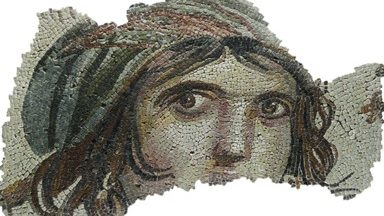Although many people think Archaeology is too focused on settlement patterns and ecological adaptations, Trigger believes “processual archaeologists paid attention to studying specific religious beliefs, cosmology, iconography, aesthetics, scientific knowledge, or values of prehistoric cultures. “

Moreover, such archaeology focuses on the people who created the objects or habitations, but some processual archaeologists ignore such aspects. Various fields of archaeology bring out different fields of history and past evidence. Along with the studies of architecture, the study of architects is also very important, who lived and worked as hunters and gatherers in the past. Moreover, the evolution of work and the position of men and women in workplaces that have been changed till now can be studied.
Women have been marginalized and have made divisions of work on a specific basis. Tremendous development has been made in the field of archeology during the 1960s, which includes the postmodernist movement, Marxist anthropology, subjectivity, and human agency. Which worked as influential aspects in archeology. To study the people/person and their lived experiences, feminist archeology from antiquity studies the social and political scenarios of female representation and advancement until now.
Feminine Archeology
According to Trigger, “The core idea about feminine archeology is about knowledge and power, the difference in identity, social life and social production of belief and praxis. Feminist theory is a sub-type of theory that looks upon the roles in the past that people had created for each other, and which was a kind of identification for their positions. This theory was not adapted as strictly and compulsory as other theories because of fewer contributions from the side of women and because the distribution of work was less among females which concluded that females played less role in production in earlier times. There was also a growing awareness of the lack of female representation in archaeology in the United States (Trigger 2006:458).
Marx’s theory and socialism played an important role in the heritage of feminist theory and the role of women in society. Moreover, the origins of feminist theory which is the 18th century, it can be said that growth and development for equality emerged immensely. To focus on the cultural history notably was feminism as per today’s point of view for the past years. Feminist philosopher Alison Wylie focused on and proposed guidelines for conducting feminist archaeology and why it is important to do so. The major guidelines she focused on are as follows; it proposes suitable questions to change the condition of people majorly women who are oppressed by the system; women being marginalized by conventional gender structures of society and should be rooted to experiences of women; no direct exploitation to others should be taken seriously to not exploit others; self-reflexivity, recognizing women’s positions, values, interests should be at center for the research. Therefore, she proposed several important aspects that contributed to the present exact study of feminine archaeology.
From antiquity to today, the Stone Age, Classical Age, Medieval Age, Modern Age, and Contemporary, the situation and condition of women remained somehow the same. The position of women remained as a gatherer and the position of men remained as a hunter. To look upon, the position of men whether he is from the lower class an aristocrat, or any higher authorized position men ruled over women. Through literature from the classic age Jane Austen in her novels “Pride and Prejudice”, “Sense and Sensibility” clearly describes the condition of women by providing a real-life example of how women cannot marry a man without having any accomplished abilities even if accomplishments are not useful as it were prohibited for women such as singing, dancing, writing etc.
The ruling of the country by women started approximately during the Victorian Age in Europe, which is a sign of an increase in the ruling and practices by women outside the house and immense development started after it. Men and women started working on the same line and balanced contributions took place. According to research in 2020, Europe is said to be at the top among feminine archaeology and development in the sense of positioning with the cost of talent and capability.
ARTICLE BY – RUTVI MAKWANA | EDITED BY – SAHIL HARVANI



